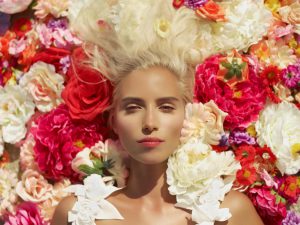
There are few things that can beat that feeling of you getting your hands on something before everyone else does. No one knows that feeling better than Jillian Wright, celebrity aesthetician and one of the founders of the Indie Beauty Expo.
Her and her partner Nader Naeymi-Rad, an entrepreneur and management consultant, decided to put together a trade show to discover, recognise, showcase, and celebrate independent beauty, wellness, and lifestyle brands. Since launching in New York City in 2015, IBE has supported the growth and success of hundreds of independent skincare and cosmetic brands, garnering a reputation as the hub of beauty innovation and inspiration in the Americas.
Their Los Angles show just wrapped up, (they’ll be showing in Dallas in May and New York in August) and we got the opportunity to sit down with Jillian to talk all things trends, brands and the business of beauty.
What is the Indie Beauty Expo?
IBE’s mission is to provide a platform to recognise, showcase and celebrate independent beauty, wellness and lifestyle brands
What was the inspiration behind the expo?
Indie brands are among the fastest growing product categories. They have become a ‘must have’ in almost every retailer’s collection and are now directly influencing key trends in their markets. IBE was founded to support the growth and success of indie brands and the entrepreneurs behind them.
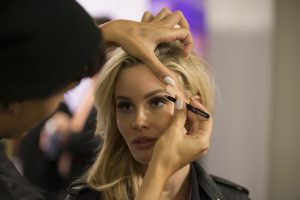
What are some of the brands that are featured at the expo and why?
Some of the highlighted brands at the Indie Beauty Expo LA are Smoothie Beauty, Amazonia Skincare, Aleavia, Ayuna-Less is Beauty, Big Boy, GuiseEtiquette, Botanic Farm, Crave Skincare, DermaFlash, dpHue, Honua Hawaiin Skincare, HUE NOIR, Julie Hewitt Cosmetics, Lauren B Beauty, Los Feliz Botanicals, Ojai Wild, Mirai Clinical, Lebon Toothpaste, Reina Rebelled, Rutz Botanicals, Jordan Seban Hair, Village Common, NNNY Skincare, Naked Truth Beauty, Skinesque, Pistachio Skincare and The Beauty Chef. As an organisation, we do not feature brands out of fairness, but these were some of the highlighted brands.
Are there any newcomers to IBE this year that you’re excited about?
50% of the brands exhibiting were from California. Some of the brands launching at IBE LA were Smoothie Beauty, Ayuna- Less is Beauty, Clover and Bee, Ojai Wild, Skinesque, ULIV Skincare (I really like this product), Crave Skincare, Honey Belle, SPELA Cosmetics and Lebon Toothpaste from France (my favorite) and Paris Honore from Minnesota.
Do you see any beauty trends emerging from IBE or from any of the brands that are attending it?
Yes, Crave Skincare uses non-hallucinogenic CBD, Pistachio Skincare uses Pistachio oil and their body cream is to die for, Lebon Toothpaste (artisans toothpaste that comes in 6 flavors), BioClarity has a a combination of chlorophyll and cooper to combat acne in a three step regimen, Reina Rebelde, a cosmetics line for latina/middle eastern and women of color (just launched at IBE LA), Smoothie Beauty, a weekly/monthly subscription based mask collection sent directly to your home, all fresh and organic.
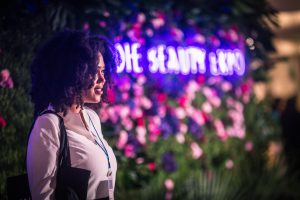
Why is it so important to highlight indie beauty brands?
Analysts have only recently started to diligently monitor and track this sector of the market—until now it was either not understood, commonly underestimated, or likely both.
With that said, according to The Kline Group, in 2014 (the most recent year for which data is available) indie brands represented approximately 7.3% or $3.12 Billion of the overall $43 Billion US Cosmetics and Beauty Market.
What is more interesting is that indie brands are growing at almost 20% a year—far outgrowing the overall market which grew by 3%. This is macro-level validation of what many people have felt for some time, that indie brands are one of the top growth drivers within the beauty market.
This phenomenon also explains the robust M&A activity we witnessed in 2015, when we saw several indie brands being acquired by larger players for (by indie standards) eye-popping valuations.
Indie brands are no longer outsiders relegated to the sidelines. They are front and center in influencing the direction of the beauty market—not only with their products, but also with the way they market to and connect with their audience.
Just as importantly, the entrepreneurs behind indie brands are now being recognized as industry thought-leaders; a category that was, until recently, almost exclusively the domain of senior executives at large beauty conglomerates and the companies who served them.
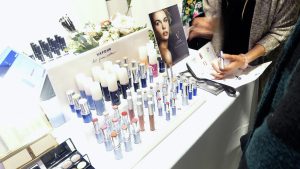
Both supply-side and demand-side factors have played a role here.
On the demand-side, mass consumerism has fractured and is now breaking apart. In its place we are seeing the emergence of individualism and Responsible Consumerism—especially in the high-end of the market. More and more affluent consumers yearn for originality, authenticity, purpose and social and environmental responsibility. And they are looking for products and retailers that meet this need.
On the supply-side, large beauty companies are simply not set-up—culturally, operationally or financially—to go after this market. Their brands are born out of objective market and trend analysis, refined through market research, promoted through mass media channels, and produced via complex supply chains that mostly terminate at large wholesale accounts. This works well for building or maintaining large global brands, but it does not work when building niche indie brands.
In contrast, indie brands are highly focused, mission-driven, lean and nimble. But until recently they faced unsurmountable barriers to entry—especially in terms of necessary infrastructure. The emergence of high-quality and affordable small-batch contract manufacturers, e-commerce and social media has massively lowered commercialization barriers and enabled indie brands to get in the game with high-quality products and a voice that can be heard. And while one can argue whether or not their products are superior to big brands (which we believe they are), there is absolutely no debate that their story, message and values connect far better with Responsible Consumers.
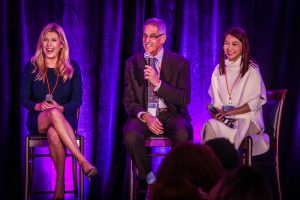
Finally, there is also the intangible factor of “scrappiness”. Indie brands are driven by entrepreneurs who can spend more one-on-one time with their end-users, innovate faster and take bigger risks than their counterparts at large companies. As a result, indie brands are better able to provide innovations that meet the needs of Responsible Consumers.
Have you considered taking Indie Beauty Expo global?
Yes, we are talking about it, but we do not have any details yet.
What do you think of the Australian beauty industry?
We believe Australia and that region of the world is at the forefront of clean and green beauty. Australia is a pillar of health and wellness living. We have many Instagram crushes on brands and influences from Australia. We look to you for trends in beauty.
Related
- Party culture responsible for increased nail polish sales
- New report says customers can’t tell the difference between designer and budget makeup
- How Model Co’s Founder and CEO created a beauty empire
- Cosmetic formulation trends for 2017

